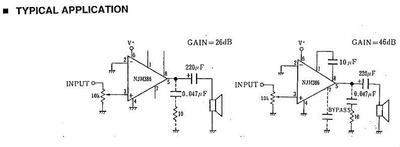First post, by Patrick
Hi,
I have an ES1868F with blown components around a 386D JRC (sorry, I can not inline photograph, my host is HTTP only).
There is two 386D with the same components around, maybe one for left and one for right sound channels.
There is resistors, R25 (blown) and R24, SMT with label "100"? No problem it is 10 Ohms.
There is capacitors, C30 (blown) and C28, SMT no label.
And there is some unknown components, X12 (blown) and X11, SMT. I don't know what X means.
I need help to identify these components .
Thanks


